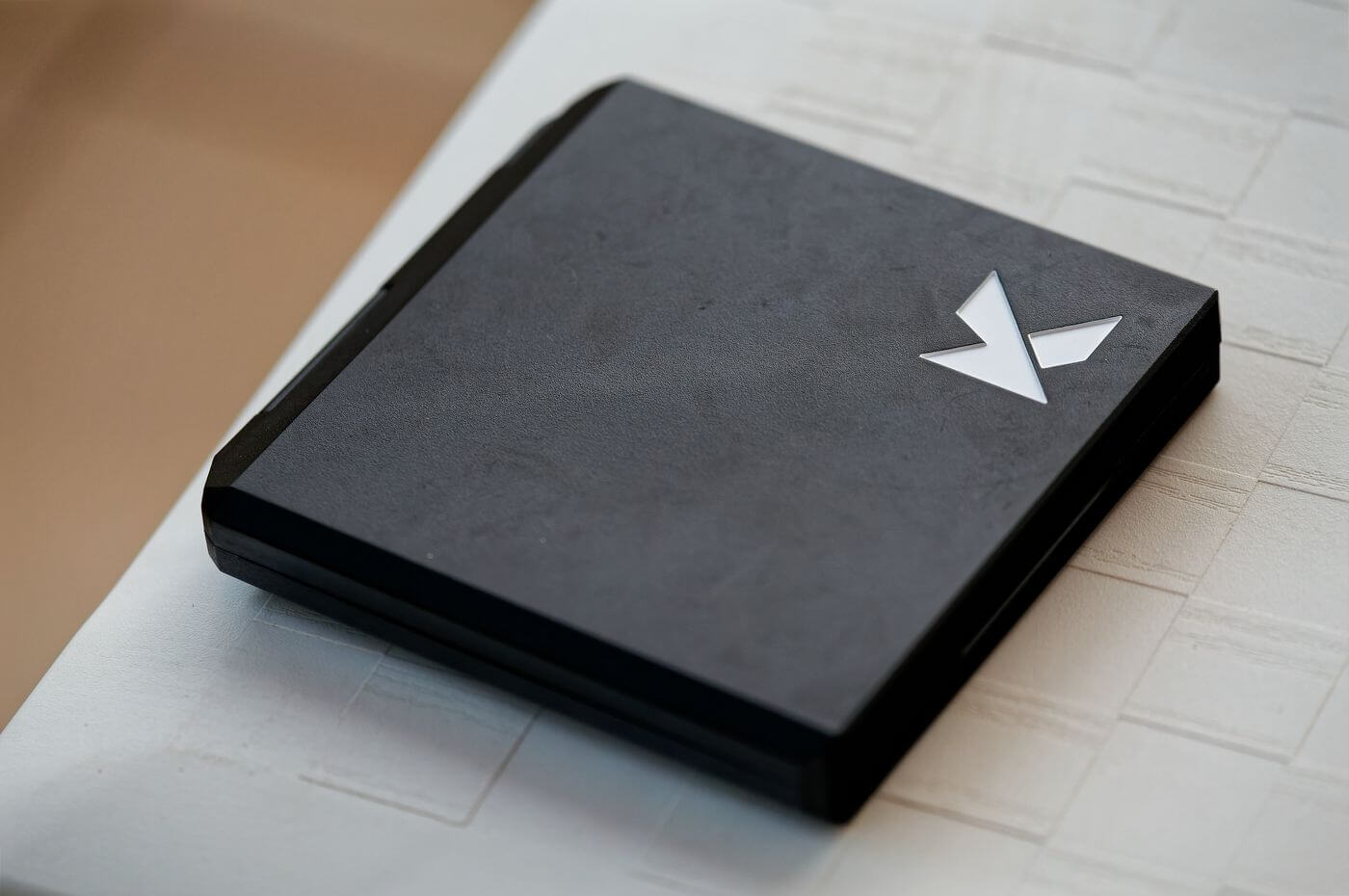I’ve tested the ND Kolari filters
Last update: 04/19/2024
Our blog continues to grow thanks to you, our readers. This post may contain affiliate links, which means we can earn a small commission if you make a purchase through them, at no extra cost to you. This helps us to continue to bring you more and support our work!
Those of you who have been following us on this blog for a long time should know that I have a passion for filters in photography. Even though the dynamic of cameras is constantly improving, I still prefer to use filters and try to improve pictures directly when shooting rather than spending time in post-processing. In this new review, I’ll talk about ND (neutral density) filters from Kolari Vision.
If you are wondering, the ND filter is clearly the one that cannot be reproduced on a computer. It’s more or less opaque depending on its density (in other words, its blackness.) It allows you to slow down the exposure time when shooting, limiting the amount of light that reaches the sensor. It is particularly useful for shooting long exposures of moving subjects, such as the sea, waterfalls, carousels, etc.
This article is written in partnership with the brand Kolari Vision, who contacted us to test their new ND filter. Kolari is a brand particularly known in the world of infrared filters. Always curious to see how these ones work and especially considering the good reviews we had about them, we agreed to test two ND filters of the brand: a ND64 (5-stops) and a ND1000 (10-stops). As usual, our opinion in this article is unbiased and we are in control of everything we write.
Even if we test both ND filters of the brand they both have many identical points, like the quality of manufacturing, packaging, handling, vignetting etc. So, we’ve decided not to separate the two filters in this test. We received them after a long wait here on the island of Tahiti. It must be said that being in the middle of a pandemic, mailings are quite long … Both filters were sent by Kolari in a 77mm diameter, which is what I asked for in order to fit on my Canon 16-35mm f/4 wide angle lens. Note that ND filters also exist in several diameters, from 49mm to 82mm.
Packaging
Let’s start with the basics. So of course, you can tell me that the packaging of an ND filter is not really the most important thing to consider when choosing your filter. That’s true but in my opinion, it is still part of the review and it can also show the professionalism – or not – of the brand.


The packaging is in the form of a very strong matte black plastic box. The square box is quite large and seems perfectly solid. I find the external design of the box really well done, with notably the white “K” in relief, reminding you of the Kolari brand. When opening the box you can feel a little resistance, which shows they’ve chosen a magnetic closing system. Indeed, four magnets are visible on the outside of the box. It’s quite an ingenious idea! The inside is made of a black foam so the filter is well protected. The ND filter is easily accessible thanks to four spots where you place your fingers, as if cut in the protective foam. If you lift the filter, you can see the perfect place to put and lock the filter in the foam. In short, in my eyes, the packaging is superb in design and very practical. I’m impressed by the packaging of these two filters, both are identical.
Handling and building of the filter
When I discovered the filter (diameter 77mm) and took it in hand, I immediately felt its physical quality. I did not weigh it on a scale, but I can note that this is a “heavy” filter of great quality. The outer part of the filter is made of brass. This has the advantage of being stronger than conventional filters, will be heavier, does not jam and is less susceptible to oxidation and corrosion.



The external part of the brass filter is notched with nice 1 to 2mm wide notches. This is really well thought out for an ideal grip, compared to the classic filters I usually use. On the edge of the filter (between the notches) is written “Kolari 77mm 5 Stop IRND” – and 10 Stop for the other filter obviously. This designation is also noted on the inside of the filter.
Regarding the glass, it is composed of a very resistant “Gorilla Glass”, the same used for iPhones and other smartphones. It is a glass which enjoys a very good reputation and is very resistant to falls (I dropped it twice during my test – and no problem!) and scratches. It’s also water repellent, meaning it’s easy to remove fog or water drops without smudging. The filter looks really thin.
Vignetting
This is also a very important point when choosing your filter. If you are using it for landscape photography, chances are that you are shooting with a wide-angle lens, such as 16-35mm on a full frame camera. Note that my Canon 16-35mm f/4 allows the use of classic screw filters, but this is not the case for all lenses, especially those noted “ultra-wide-angle”. I’m thinking in particular of the 12-24mm, 14-24mm, as well as the very good Sony 14mm f/2.8 GM that has just been released.
I did some quick tests on different subjects, and I’ve noticed almost no apparent vignetting with the use of the filter on my 16-35mm, at 16mm on a full frame camera (Canon 6D). You clearly don’t see the filter appearing on the edge of the image, as might be the case with a non-slim filter and with some slim, but thicker filters. I’ve measured the filter and it is 5mm thick, which is better than my Hoya HD slim filter (8mm).
Below is a comparison of a photo with and without ND filter mounted on my 16-35mm, at 16mm.


As you can see, there is no impact of the ND64 Kolari filter on vignetting, even at 16mm on a full frame camera
Sharpness
Another important thing to note when choosing an ND filter is its impact on the quality of your final image. The filter (and therefore the quality of the glass used) must not impact the sharpness of your image. I’ve also made several precise tests and zoomed on the image at 100% in Dxo, the post processing software I use daily. I did not observe any loss of quality when using ND filters. Judge for yourself with the image below.


On the ten or so tests I was able to perform in the field, I didn’t observe any loss of quality between the images with and without ND filter
Coating
The coating of the filter is really well done in my opinion. It is presented as being water repellent. I did the test of pouring a few drops of water on the filter, and I was honestly amazed by how easy it was to wipe it. Nothing to complain about on this side.
Color rendering
Where we finally expect the most from an ND filter is its impact on the natural colors of your image. Indeed, some ND filters will clearly tend to impact colors. If you shoot in JPEG, this will matter because your white balance will not be correct, and you will therefore get a “false picture” in terms of colors. If you shoot in RAW, it is less problematic but you will still have to correct your white balance in post processing.
I’m thinking in particular of high-density filters like ND1000. So, I was particularly curious to see how these filters from Kolari would perform on this front. I’ve used for example, the famous Big Stopper filter from Lee (10 stops) which completely messes up the white balance, giving a very cold color image – not to say completely blue. Of course, I was able to correct it in post processing (in RAW) but I had to warm up the scene to about +15 000K.
To explain the “test methodology”, I simply shot different subjects in different locations, all in manual focus, without stabilization, on a tripod and in RAW. The white balance was set to “Automatic” when shooting, and I had to adapt it later in post processing as the camera could not use the same white balance for two images a few seconds apart, with and without filter. I then compared the two images on Dxo, by making sure that the white balance in the software was identical between them two. In fine, the objective was to check if there was any color tone between the two pictures (with and without filter).
I decided to make several tests “in the field.” I did the first one inside my house, on a set of clothes of different colors so we can easily see the impact on them. I must say that I was bluffed: both the ND64 filter and the ND1000 filter have literally no influence on the colors of the images. I let you judge with the two images below. Other people who tested these filters also had the same result.


As you can see, the ND1000 filter from Kolari offers superb color neutrality. I dare you to find any difference with and without the filter!
I won’t show you the same image with the ND64 Kolari as it’s totally identical, no influence on the white balance
I even made a comparison to show you the difference of the filter impact on the color rendition between the ND Kolari ND1000 and the Big Stopper from Lee (ND1000 too) – even if the goal here is not to compare Kolari filters with other brands.


The difference in rendering is huge. The ND1000 Big Stopper filter from Lee really tends to impact a lot the white balance. Clearly, it’s quite obvious that the ND1000 filter from Kolari is much more neutral.
I’ve decided to do another outdoor test on a specific subject: a tree trunk in a park. The result is finally the same as indoors.


Here is a 100% crop of a coconut tree in an outdoor park – The result is identical, no difference with and without ND filter, which shows the great neutrality of Kolari ND filters
In the end, I find that these filters offer a superb color rendering, accurate to reality. It’s almost perfect, whether it’s the ND64 filter or the ND1000 filter.
Conclusions
Here is the end of this review of the Kolari ND filters. I was really pleased with these new ND filters, they really are of remarkable quality. The packaging is really well done, the filters are really thin (limiting vignetting perfectly,) the quality of the glass is superb and doesn’t impact the sharpness of the image, and the construction of the filters and their handling is impeccable. And finally, most importantly: I did not observe any color tinting when using them. I haven’t tested all the ND filters out there, but I have to say that these are the best ones I’ve been able to test so far.
If you want to buy this superb ND filter, you can go through the following link.
In the meantime, if you want to read more, I invite you to read our full article explaining in detail how to choose your ND filter.
From now on, we’ll try to test more and more photo equipment and accessories. If you are a brand interested in a photo test, feel free to contact us!
See you soon.

Written by Sylvain PONS
I've been passionate about photography since 2010, learning as I went along. Today, I dedicate myself to guiding others in their choice of camera gear and sharing a variety of tips to improve their photography skills.
Despite our care, a mistake may have slipped into this article. If you find any, please don't hesitate to let us know so we can correct it as soon as possible and keep our information up-to-date!






